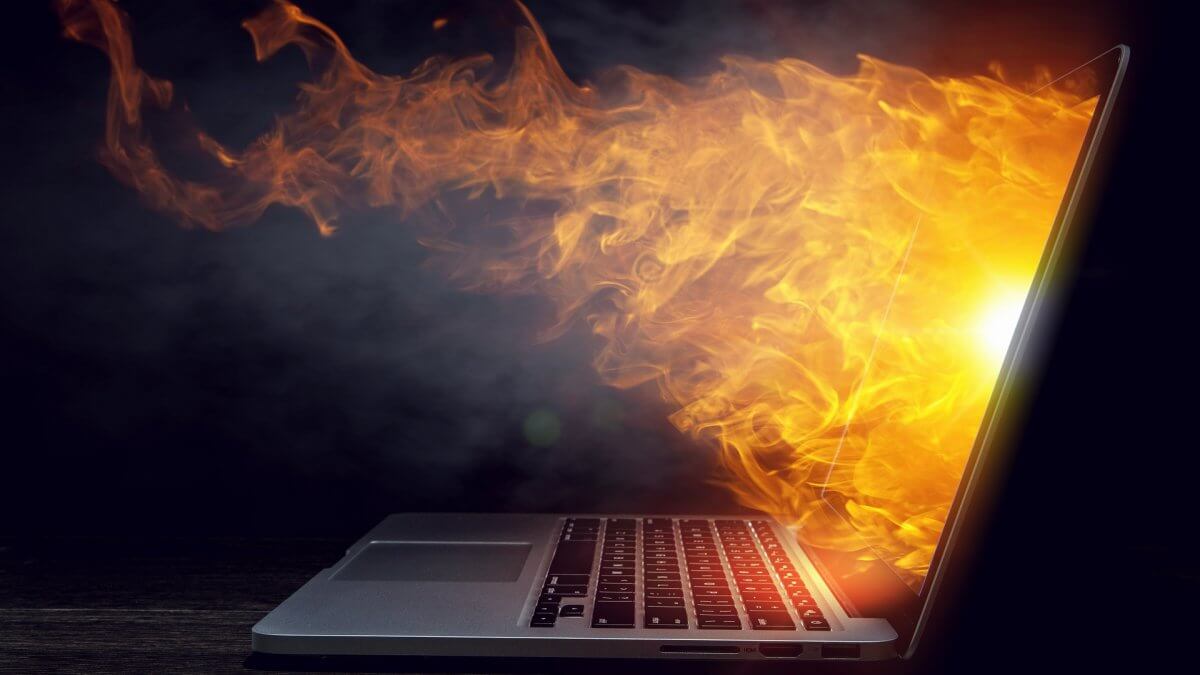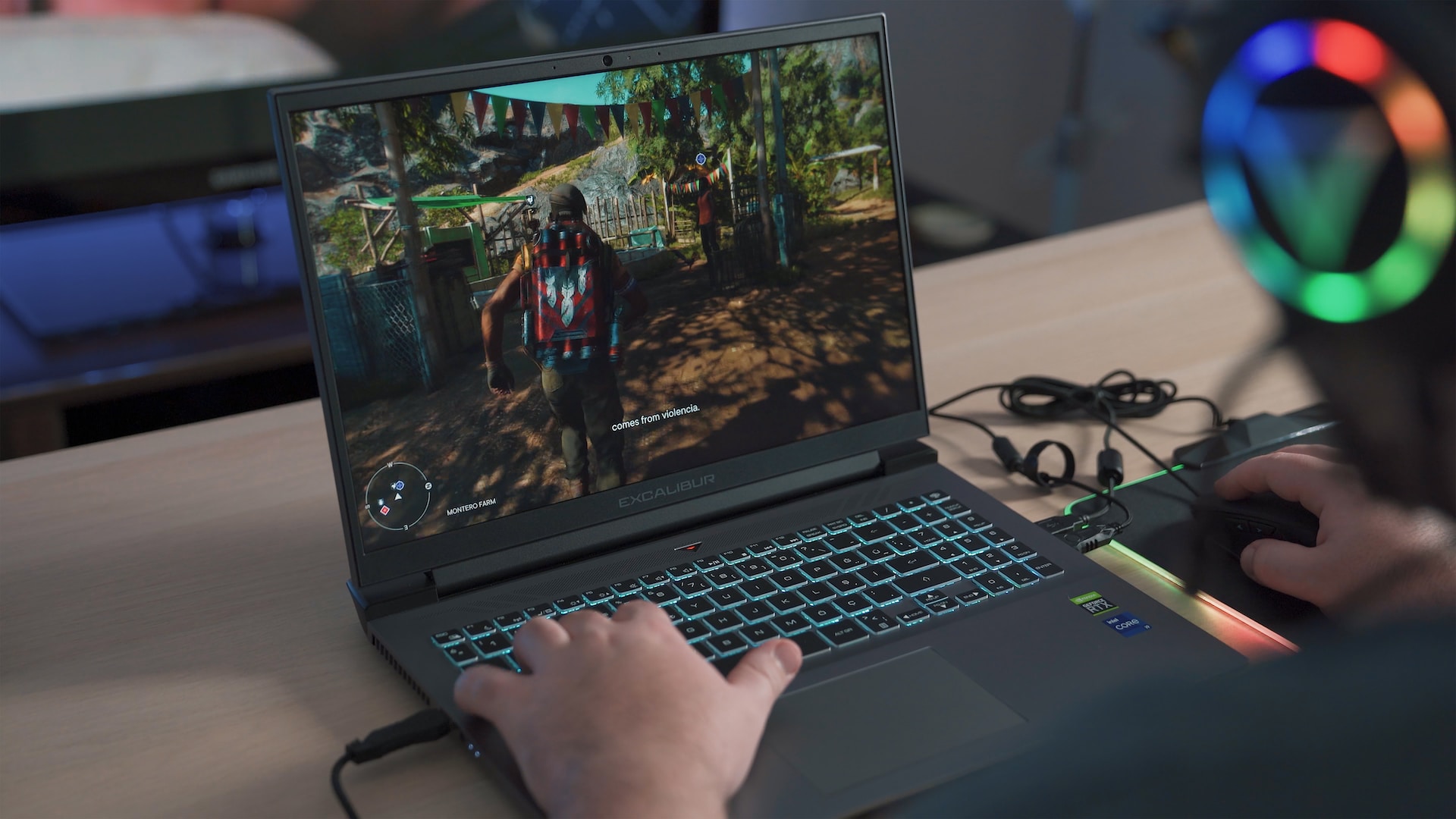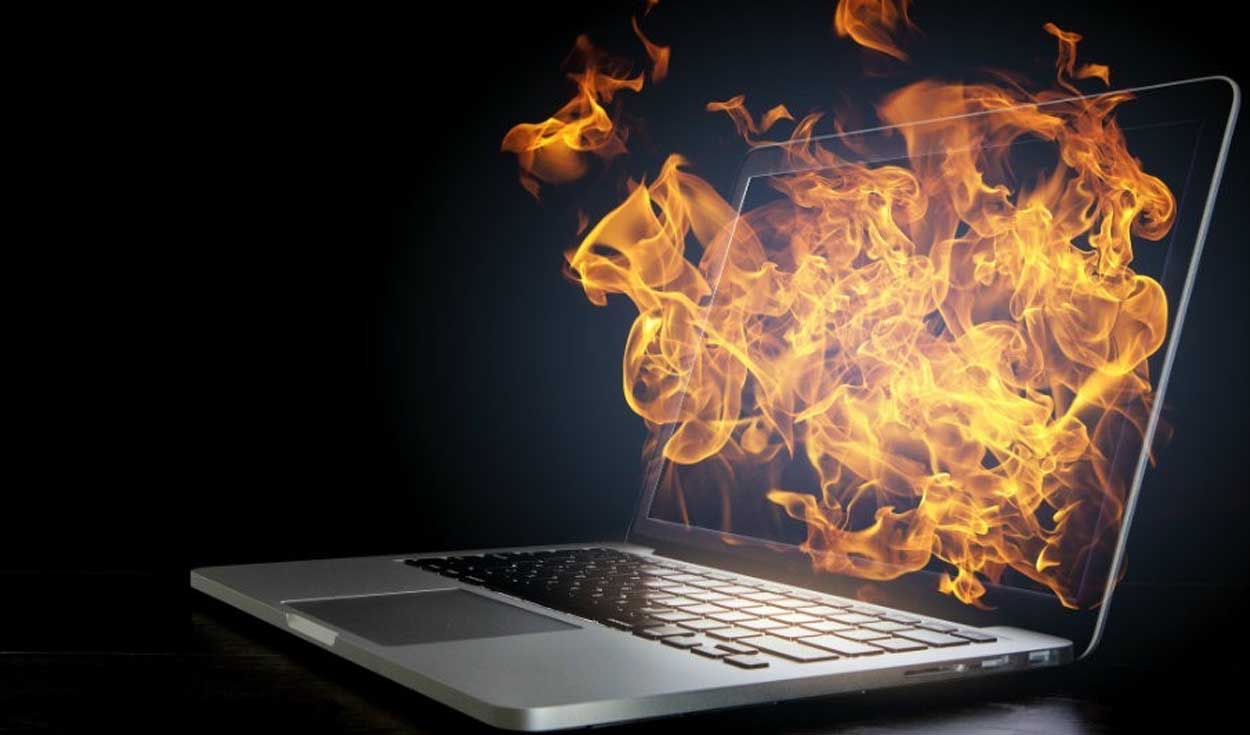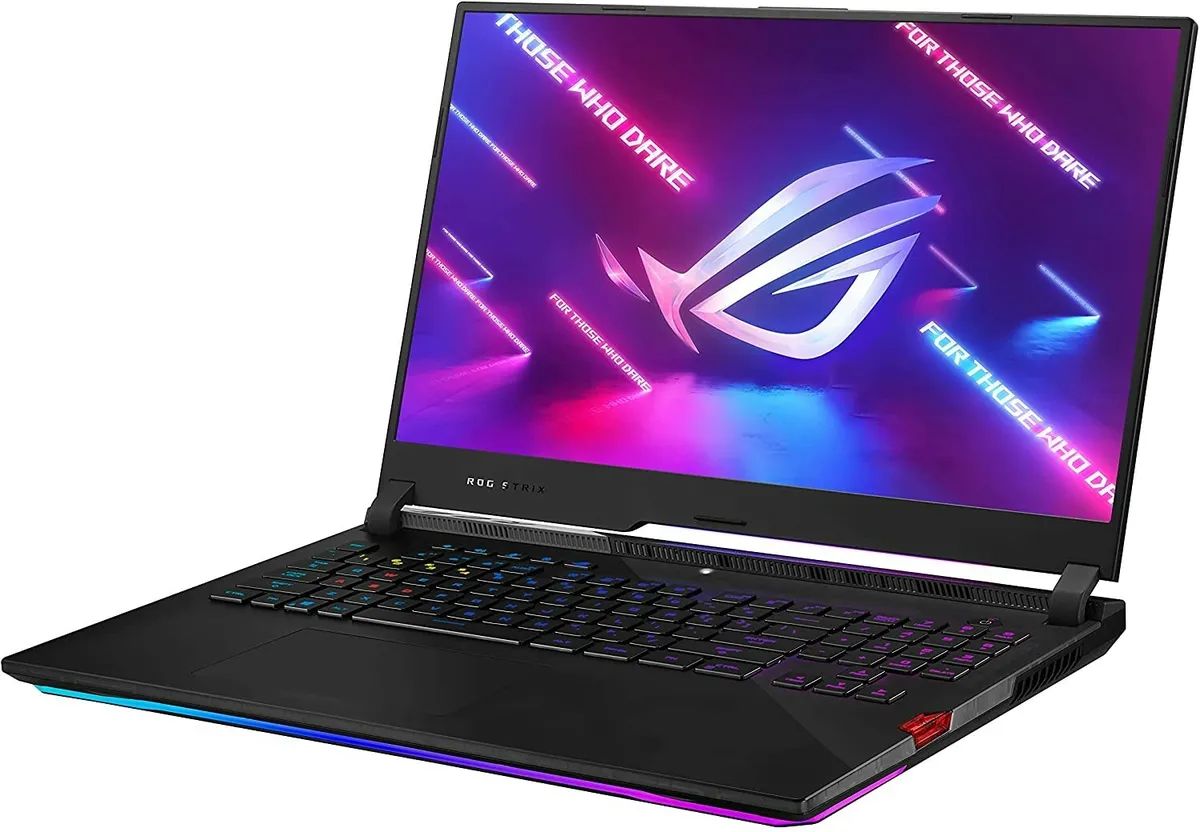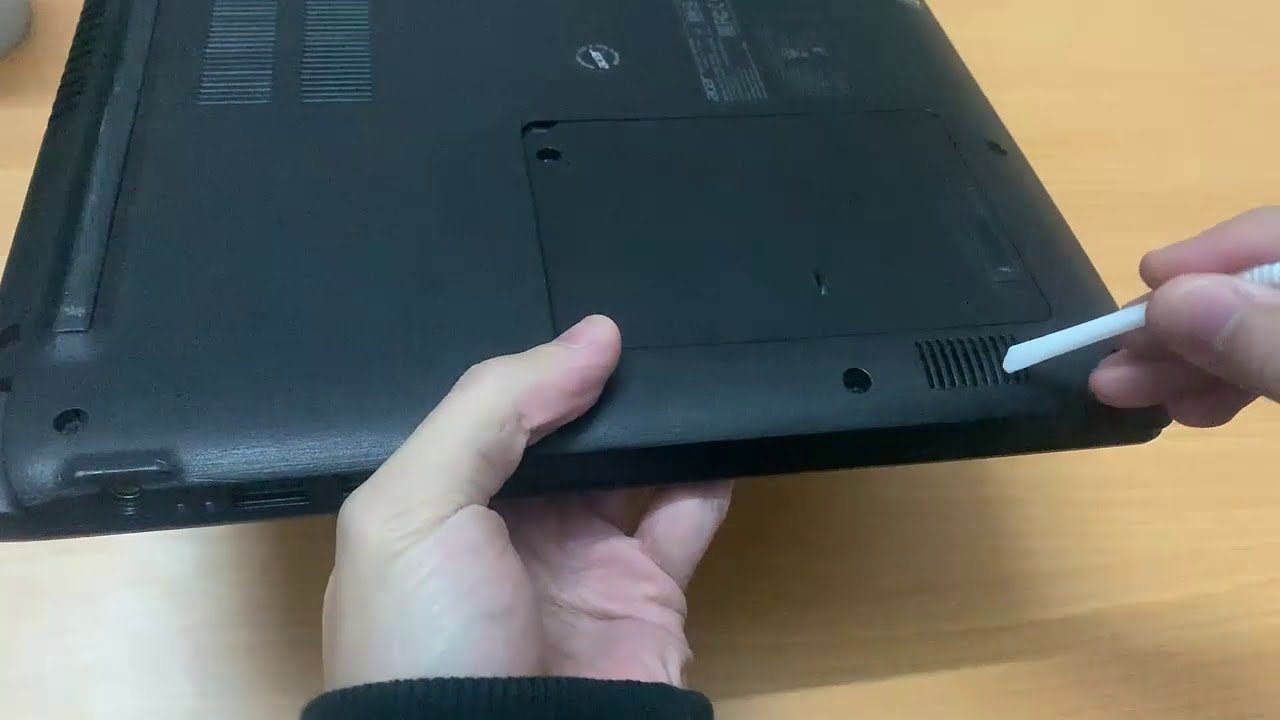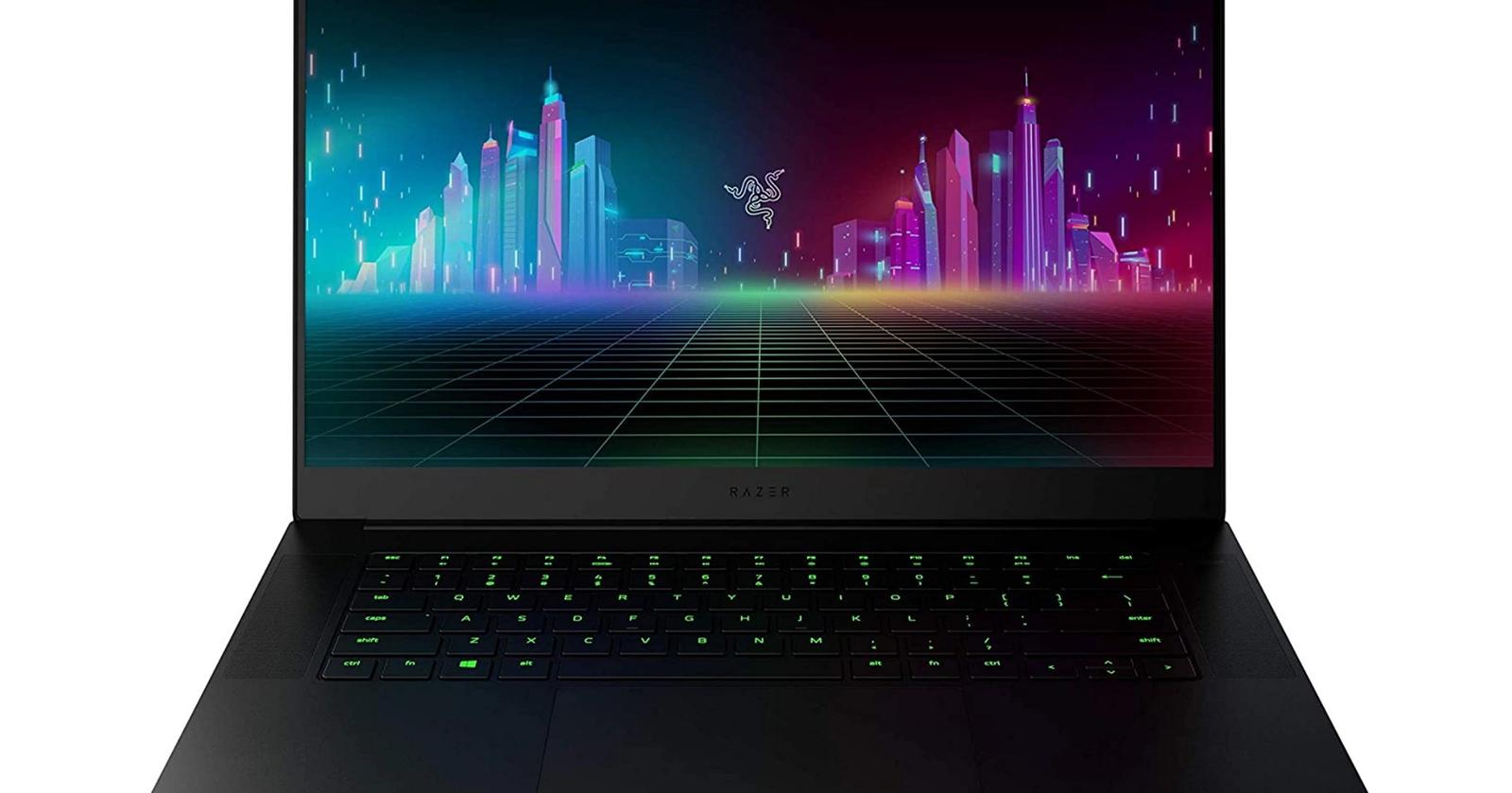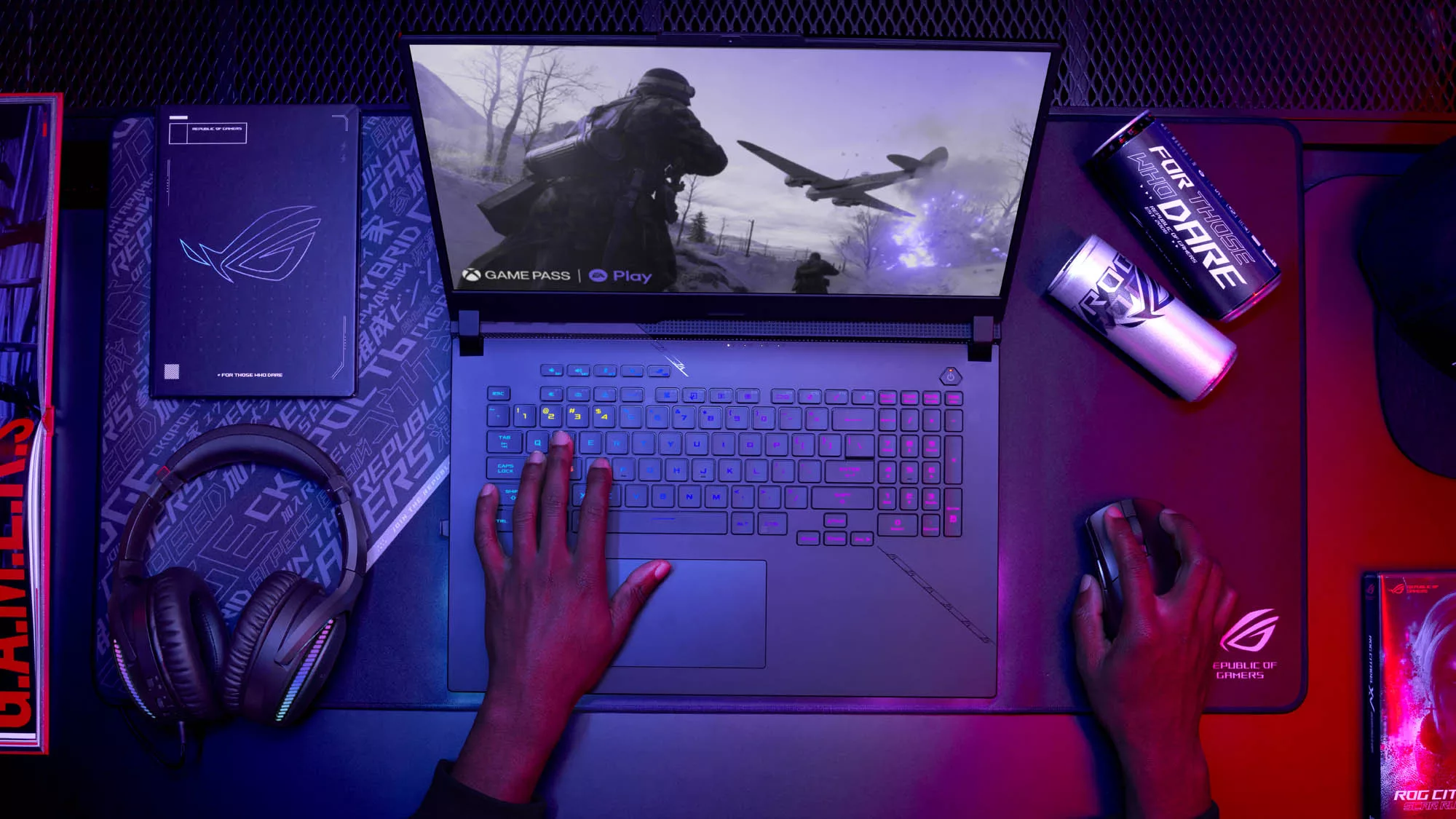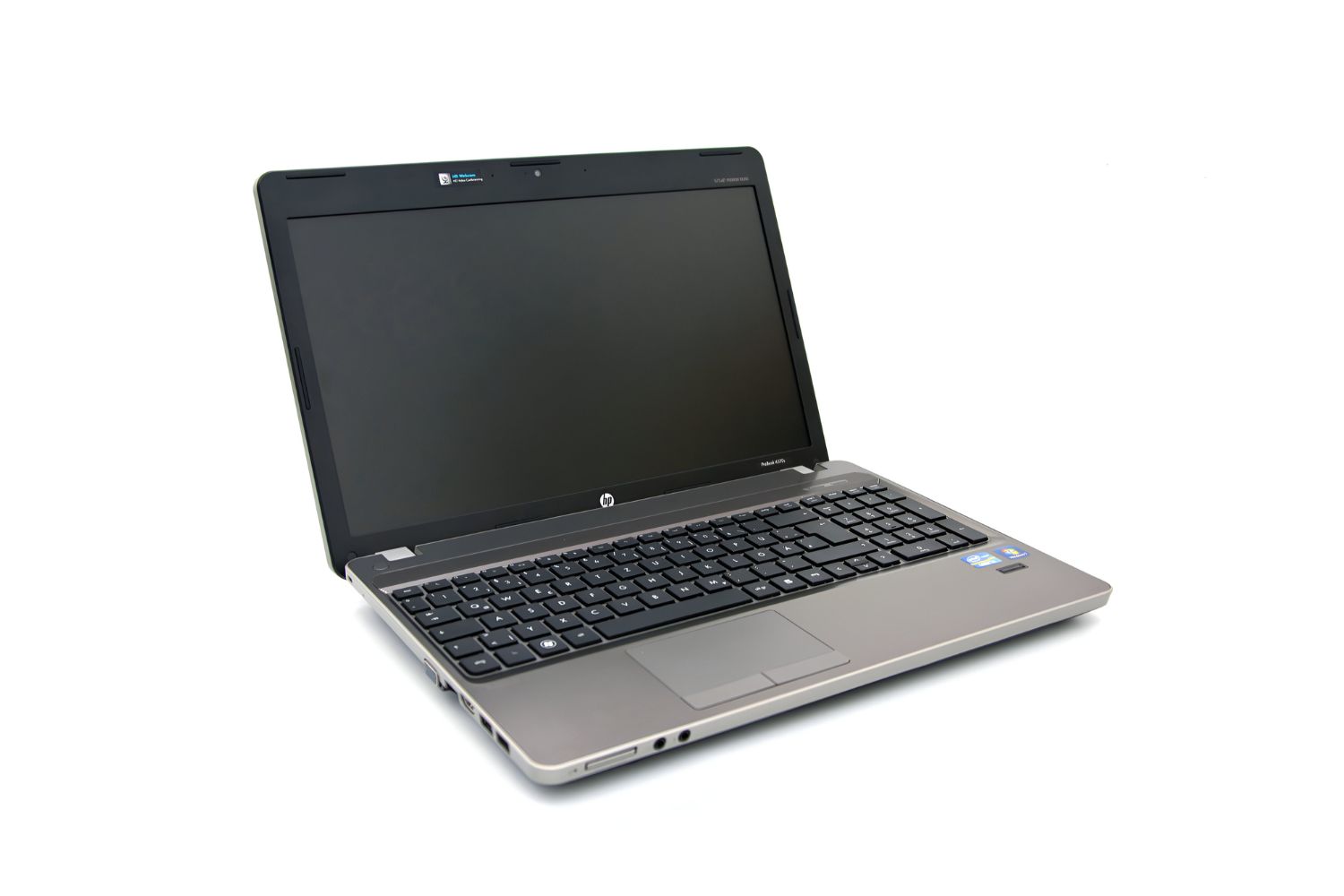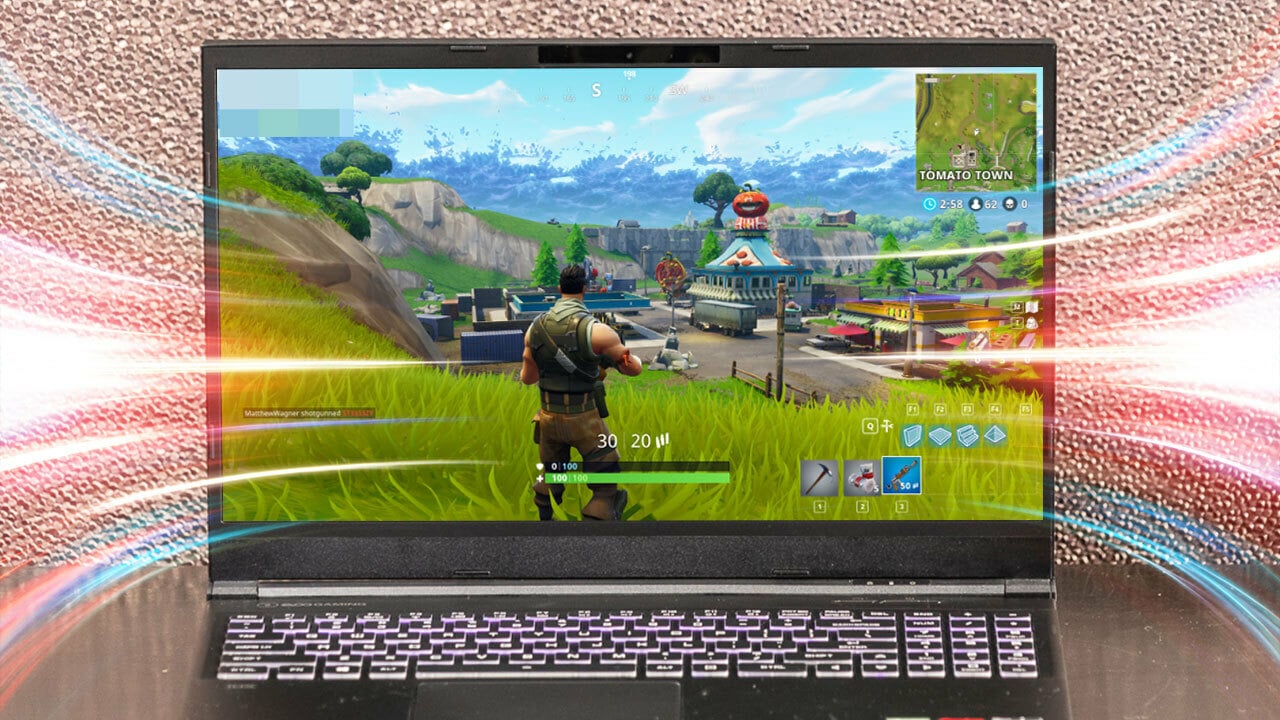Introduction
Gaming laptops have become increasingly popular due to their powerful hardware and ability to handle demanding graphics and processing requirements. However, one common issue that gamers face with these laptops is overheating. When a gaming laptop overheats, it can lead to performance issues, system crashes, and even permanent damage to the internal components.
Understanding why gaming laptops overheat is crucial for taking appropriate measures to keep them cool. Gaming laptops are designed to handle intense gaming sessions, which require a significant amount of power and generate a significant amount of heat. The powerful processors and graphics cards in gaming laptops produce a substantial amount of heat during operation, and when combined with inadequate cooling systems or improper usage, it can result in overheating.
The good news is that there are several effective ways to keep your gaming laptop cool and prevent overheating. By implementing these tips and making a few adjustments to your gaming setup, you can ensure optimal performance and extend the lifespan of your gaming laptop. In this article, we will explore some of the best practices to keep your gaming laptop cool and avoid overheating issues.
Why Gaming Laptops Overheat
Gaming laptops are prone to overheating due to several factors. The excessive heat generated while running graphically-intensive games or performing demanding tasks puts a strain on the cooling system of the laptop. Here are some reasons why gaming laptops are more susceptible to overheating:
1. Powerful Hardware: Gaming laptops are equipped with high-performance processors and dedicated graphics cards that produce a significant amount of heat during operation. The powerful hardware requires more power, leading to increased heat production.
2. Compact Design: Gaming laptops are designed to be portable and sleek, often compromising on cooling capabilities. The compact size limits the space for effective heat dissipation, making it challenging for the cooling system to keep up with the heat generated.
3. Inadequate Cooling Systems: Some gaming laptops have subpar cooling systems that are not efficient enough to effectively dissipate heat. The cooling fans and heat sinks may not be powerful or properly positioned, hindering the cooling process.
4. Obstructed Air Vents: Dust, debris, and even placing the laptop on soft surfaces can block the air vents, compromising the airflow and preventing heat from escaping. This obstruction can cause heat to accumulate inside the laptop, leading to overheating.
5. Intensive Usage: Gamers often spend hours playing graphically demanding games, pushing their laptops to their limits. Continuous heavy usage, such as running multiple applications simultaneously or overclocking the hardware, can intensify heat generation and strain the cooling system.
6. Inefficient Thermal Management: The thermal paste applied to transfer heat between the processor and heat sink can degrade over time, reducing its efficiency. This can result in poor heat dissipation and increased temperatures.
Understanding the reasons why gaming laptops overheat is vital for implementing effective strategies to prevent overheating and ensure optimal performance. By addressing these underlying issues, gamers can enjoy extended gaming sessions without worrying about system overheating and its consequences.
Tips to Keep Your Gaming Laptop Cool
Keeping your gaming laptop cool is essential for maintaining optimal performance and preventing overheating issues. Here are some effective strategies to help you keep your gaming laptop cool:
1. Clean Your Laptop Regularly: Dust and debris can accumulate inside your laptop, blocking the air vents and hindering proper airflow. Regularly clean the vents, fans, and heat sinks using compressed air or a soft brush to remove any build-up and maintain efficient cooling.
2. Use a Cooling Pad: Investing in a cooling pad can significantly improve the cooling performance of your gaming laptop. These pads come equipped with additional fans to enhance airflow and provide a stable surface for your laptop, reducing the risk of overheating.
3. Optimize Your Laptop’s Ventilation: Ensure that the air vents of your laptop are not obstructed. Place your laptop on a hard, flat surface while gaming to allow proper airflow and heat dissipation. Using a laptop stand or propping it up on books can also help improve ventilation.
4. Avoid Blocking the Vents: Be mindful of where you place your laptop during gaming sessions. Avoid placing it on soft surfaces like blankets or pillows, as they can block the air vents and restrict airflow, leading to increased temperatures.
5. Adjust Your Power Settings: Modifying your power settings can help reduce the strain on your laptop’s hardware, resulting in lower heat generation. Set your laptop to a power-saving mode or limit the maximum processor performance when not engaged in intensive tasks.
6. Monitor Your Laptop’s Temperatures: Utilize software tools to monitor your laptop’s temperature in real-time. This will allow you to keep track of any abnormal heat levels and take necessary action, such as closing resource-intensive applications or adjusting cooling settings.
7. Repaste the Thermal Paste: Over time, the thermal paste between the processor and the heat sink can degrade, affecting heat dissipation. Periodically check the condition of the thermal paste and consider reapplying it to maintain effective heat transfer.
8. Elevate Your Laptop: Elevating your laptop using a laptop stand or cooling pad can create space underneath, allowing better airflow to the vents. This simple adjustment can significantly improve cooling performance.
9. Keep Your Laptop in a Cool Environment: Avoid gaming in hot or humid environments, as this can exacerbate overheating issues. Opt for a well-ventilated and air-conditioned room to help maintain cooler temperatures for your laptop.
10. Avoid Overloading Your Laptop: Running multiple resource-intensive applications simultaneously puts a strain on your laptop’s hardware, causing it to generate more heat. Close unnecessary background processes and limit multitasking to reduce heat generation.
By following these tips, you can effectively prevent your gaming laptop from overheating, ensuring smoother gaming experiences and prolonging the lifespan of your device. It’s crucial to prioritize proper cooling to safeguard your investment and enjoy uninterrupted gaming sessions.
Clean Your Laptop Regularly
Dust and debris can accumulate over time inside your gaming laptop, obstructing the air vents and impeding the cooling system’s effectiveness. Regularly cleaning your laptop is a simple yet crucial step in keeping it cool. Here are some tips for cleaning your laptop:
1.1. Prepare: Before starting the cleaning process, shut down your laptop and unplug it from the power source. This ensures your safety and prevents any damage to the internal components.
1.2. Gather Cleaning Tools: You’ll need a soft brush, compressed air canister, and lint-free cloth for the cleaning process. Avoid using abrasive materials or liquids that could damage the laptop.
1.3. Compressed Air: Use compressed air to blow out any dust or debris from the vents, keyboard, and other crevices. Hold the canister upright and use short bursts of air to prevent condensation from forming. Make sure to keep the canister at an appropriate distance to avoid damaging any delicate components.
1.4. Brush the Keys: Gently brush the keys using a soft brush to remove any debris or dust. Pay attention to hard-to-reach areas between the keys. You can also use a small amount of isopropyl alcohol on a cotton swab to clean stubborn stains or sticky residue. However, be cautious and ensure the laptop is turned off during this process.
1.5. Wipe the Surface: Use a lint-free cloth slightly dampened with water or a mild cleaning solution to wipe the surface of your laptop. This will remove any fingerprints, smudges, or noticeable dirt. Avoid excessive moisture and ensure the cloth is only slightly damp to avoid damage to the laptop.
1.6. Clean the Screen: Use a microfiber cloth to gently clean the screen. If there are stubborn marks, use a screen cleaning solution designed specifically for laptops. Avoid using glass cleaners or abrasive materials that can scratch the screen.
1.7. Reassemble and Restart: Once you’ve completed the cleaning process and ensured that everything is dry, reassemble your laptop and switch it back on. You’ll notice improved airflow and cooling after removing the accumulated dust and debris.
Regularly cleaning your gaming laptop not only prevents overheating but also helps maintain its overall performance and longevity. Aim to clean your laptop every few months or as needed, depending on your gaming habits and the environment in which you use it.
Use a Cooling Pad
Using a cooling pad is an effective way to enhance the cooling performance of your gaming laptop. These pads are specially designed to provide additional airflow and help dissipate heat more efficiently. Here’s why you should consider using a cooling pad:
2.1. Enhanced Airflow: Cooling pads are equipped with built-in fans that provide extra airflow to your laptop’s underside. This helps to cool down the components that generate the most heat, such as the CPU and GPU, by expelling the hot air and drawing in cooler air.
2.2. Stability: Cooling pads usually come with a non-slip surface that provides a stable base for your laptop. This prevents any wobbling or accidental movement during intense gaming sessions, ensuring your laptop remains secure and in an optimal position for cooling.
2.3. Ergonomics: Many cooling pads are designed with ergonomics in mind, offering adjustable height and angle settings. This allows you to find a comfortable viewing position, reducing strain on your neck and wrists during long gaming sessions.
2.4. Portability: Cooling pads are lightweight and portable, making them convenient to use at home, during LAN parties, or when gaming on the go. They can easily fit in your laptop bag or backpack, ensuring you have a reliable cooling solution wherever you play.
2.5. Easy Setup: Using a cooling pad is as simple as placing your laptop on top of it. Most cooling pads are USB-powered and only require a single connection to your laptop to power the built-in fans. This eliminates the need for additional power outlets or cables cluttering your gaming setup.
2.6. Compatibility: Cooling pads are designed to accommodate various laptop sizes. They typically have adjustable arms or brackets that can securely hold your laptop in place, regardless of its dimensions. This ensures a proper fit and optimal cooling for your specific laptop model.
2.7. Cost-Effective Solution: Investing in a cooling pad is a cost-effective way to improve the cooling performance of your gaming laptop. Compared to other cooling solutions, such as upgrading the internal cooling system or investing in liquid cooling, cooling pads are relatively affordable and offer immediate results.
A cooling pad can significantly help in reducing the temperature of your gaming laptop, preventing overheating, and ensuring better performance during intense gaming sessions. Consider investing in a high-quality cooling pad that suits your needs and enjoy improved cooling and longevity for your beloved gaming machine.
Optimize Your Laptop’s Ventilation
Optimizing your gaming laptop’s ventilation is essential for ensuring efficient heat dissipation and preventing overheating. Proper ventilation allows for the intake of cooler air and the expulsion of hot air, aiding in maintaining ideal operating temperatures. Here are some tips to optimize your laptop’s ventilation:
3.1. Clean the Air Vents: Regularly clean the air vents of your laptop to remove dust and debris that might be obstructing the airflow. Use compressed air or a soft brush to gently clean the vents and ensure unrestricted airflow.
3.2. Position Your Laptop: Position your laptop on a hard, flat surface while gaming to enhance ventilation. Hard surfaces like a desk or table allow air to flow freely, preventing the accumulation of heat underneath the laptop.
3.3. Elevate the Laptop: Elevate your laptop using a laptop stand or cooling pad to create space beneath it. This space improves airflow by allowing cooler air to enter through the bottom and hot air to escape from the top or sides of your laptop.
3.4. Use Cooling Riser Stands: Cooling riser stands are designed to lift the back of your laptop, creating an angle that promotes better airflow. These stands also provide additional stability and a comfortable viewing angle for extended gaming sessions.
3.5. Avoid Blocking the Vents: Ensure that you do not obstruct the air vents of your laptop. Placing your laptop on soft surfaces like blankets or pillows can block the vents and restrict airflow, leading to overheating. Use a hard surface or a laptop cooling pad instead.
3.6. Regularly Replace Filters: Some laptops have air filters to prevent dust from entering the system. Check if your laptop has filters and replace them regularly, as clogged filters can hinder airflow and contribute to overheating.
3.7. Keep External Devices Away: External devices such as hard drives or USB hubs can generate heat and obstruct ventilation if placed too close to the laptop. Keep these devices at a distance to allow proper airflow around your laptop.
3.8. Remove Laptop Skins or Covers: Laptop skins, decals, or covers might look stylish, but they can hinder airflow and block the laptop’s ventilation. Consider removing them if you notice your laptop running hotter than usual.
3.9. Avoid Overcrowding: Avoid placing items near the laptop that can block the vents or restrict airflow. Keep your gaming setup organized and free from clutter to maintain optimal ventilation.
3.10. Use External Cooling Devices: In addition to optimizing your laptop’s ventilation, you can also consider using external cooling devices such as USB-powered fans or laptop vacuum coolers. These devices provide extra airflow and can help in maintaining lower temperatures.
By implementing these ventilation optimization tips, you can ensure better airflow and ventilation for your gaming laptop. Proper ventilation is crucial for preventing overheating and keeping your laptop running smoothly during demanding gaming sessions.
Avoid Blocking the Vents
Proper airflow is crucial for preventing overheating in your gaming laptop, and one common mistake that many users make is blocking the vents. When the air vents are obstructed, the hot air generated by the internal components cannot escape, resulting in increased temperatures and potential performance issues. Here are some tips to avoid blocking the vents and ensure adequate airflow:
4.1. Choose the Right Gaming Surface: When placing your laptop, make sure to choose a hard and flat surface that allows air to flow freely. Avoid soft surfaces like beds, pillows, or thick blankets, as they can easily block the vents and restrict airflow.
4.2. Avoid Covering the Vents: Be mindful of where you place your hands or other objects while using your gaming laptop. Accidentally covering the vents with your hand or resting other objects on top of them can obstruct the airflow, leading to overheating. Keep the vents clear at all times.
4.3. Properly Position External Devices: If you are using external devices such as external hard drives or USB hubs, ensure that they do not cover or block the laptop’s vents. These devices can generate heat and hinder airflow, contributing to increased temperatures. Keep them at a safe distance from the laptop.
4.4. Avoid Blocking Side Vents: Many gaming laptops have side vents to allow additional airflow. Check the placement of these vents and ensure they are not obstructed by objects such as books, notebooks, or other items. Maintaining clear side vents is crucial for proper heat dissipation.
4.5. Do Not Cover the Bottom of the Laptop: Some people tend to place their laptops on their laps or on soft surfaces, inadvertently covering the bottom vents. This can significantly restrict airflow and cause overheating. Instead, opt for a hard surface or use a laptop cooling pad to elevate the laptop.
4.6. Keep Cables Organized: Messy and tangled cables can inadvertently block the vents and restrict airflow around your gaming laptop. Keep your cables organized and ensure they are positioned away from the vents to allow unobstructed airflow.
4.7. Clean Around the Vents: Regularly clean the area around the vents to prevent dust and debris from accumulating. Use a soft brush or compressed air to remove any build-up, ensuring optimal airflow and preventing blockages.
4.8. Be Mindful of Laptop Skins or Covers: While laptop skins and covers can personalize your device, some may cover the vents or interfere with the laptop’s cooling system. Ensure that any skins or covers you use do not obstruct the vents or hinder airflow.
4.9. Check the Placement of Stickers or Decorations: Stickers or decorations on the laptop lid or around the vents should be carefully placed to avoid blocking the airflow. Pay attention to their positioning and ensure they do not cover any crucial ventilation areas.
4.10. Regularly Inspect the Vents: Make it a habit to routinely inspect the vents on your gaming laptop to ensure they are free from obstructions. By visually checking the vents, you can identify any potential blockages and take necessary steps to clear them before they cause overheating.
By avoiding the blockage of vents, you can ensure proper airflow and prevent overheating in your gaming laptop. Practicing these tips will help maintain optimal performance and extend the lifespan of your valuable gaming machine.
Adjust Your Power Settings
Adjusting your power settings can significantly contribute to keeping your gaming laptop cool and preventing overheating. By optimizing power consumption, you can reduce the strain on your laptop’s hardware, resulting in lower heat generation. Here are some tips to adjust your power settings effectively:
5.1. Power Saving Mode: Switching to a power-saving mode helps reduce the power consumption of your laptop. This setting minimizes the performance of the CPU and other components, resulting in lower heat generation. Adjust your power plan settings to prioritize power saving when you’re not engaged in resource-intensive tasks.
5.2. Limit Maximum Processor Performance: Most gaming laptops have power management options that allow you to limit the maximum processor performance. By reducing the maximum performance, you can decrease power consumption and consequently lower heat production. However, keep in mind that doing so may impact gaming performance, so find a balance that suits your needs.
5.3. Adjust Display Brightness: Bright displays can consume a significant amount of power, leading to increased heat generation. Lowering the display brightness can not only improve battery life but also reduce the strain on your laptop’s hardware, resulting in cooler operation. Adjust the brightness level to a comfortable setting that balances visibility and power consumption.
5.4. Disable Unnecessary Background Programs: Closing unnecessary background programs and processes can reduce the overall load on your laptop’s system. These programs can consume valuable system resources and contribute to heat generation. Use the Task Manager or a third-party software to identify and close any unnecessary apps running in the background.
5.5. Control GPU Performance: Graphics processing units (GPUs) are among the primary components that generate heat in gaming laptops. Adjusting the GPU performance settings can help regulate heat output. Many laptops come with proprietary software that allows you to customize the GPU performance and temperature thresholds. Use these tools to find a balance between performance and heat generation.
5.6. Manage System Updates: Software updates can sometimes lead to increased system resource usage, which can cause your laptop to generate more heat. Set your update preferences to manual or schedule them during periods of low computer usage to avoid potential heat spikes during gaming sessions.
5.7. Utilize Power Management Software: Install power management software that enables you to tweak and monitor power settings more effectively. These tools provide advanced customization options and real-time power and temperature monitoring, allowing you to fine-tune your laptop’s performance and heat output.
5.8. Avoid Overclocking: Overclocking the CPU or GPU can significantly increase the heat generated by your laptop. While it may offer a performance boost, this can put additional strain on the cooling system, leading to overheating. Unless you are experienced and have adequate cooling measures in place, it’s best to avoid overclocking.
5.9. Restart Your Laptop: Restarting your laptop periodically can help refresh the system and clear any unnecessary processes or tasks that may contribute to heat generation. This allows your laptop to operate more efficiently and maintain lower temperatures during usage.
5.10. Experiment and Monitor: Experiment with different power settings, making adjustments based on your gaming requirements and the thermal performance of your laptop. Continuously monitor your laptop’s temperatures using software tools to ensure that the adjustments are effective in reducing heat generation.
By adjusting your power settings intelligently, you can reduce heat generation and promote better cooling for your gaming laptop. Fine-tune these settings based on your individual needs to strike a balance between performance and temperature management.
Monitor Your Laptop’s Temperatures
Monitoring your gaming laptop’s temperatures is crucial for preventing overheating and ensuring optimal performance. By keeping a close eye on the temperature readings, you can identify potential issues early on and take appropriate measures to mitigate them. Here’s why monitoring your laptop’s temperatures is important and how to do it effectively:
6.1. Identify Overheating Issues: Monitoring your laptop’s temperatures allows you to identify if your laptop is experiencing overheating problems. If the temperatures consistently exceed safe operating limits, it’s an indication that there may be underlying cooling issues that need to be addressed.
6.2. Use Software Monitoring Tools: Install software utilities specifically designed for monitoring hardware temperatures. These tools provide real-time temperature readings for various components of your laptop, including the CPU and GPU. Popular examples include HWMonitor, SpeedFan, and Core Temp.
6.3. Observe Idle and Load Temperatures: Monitor temperatures during both idle and load states to gain a comprehensive understanding of your laptop’s thermal behavior. Idle temperatures reflect the baseline levels, while load temperatures indicate how the laptop performs when under heavy usage, such as during gaming sessions or running resource-intensive applications.
6.4. Check Safe Operating Temperatures: Research and note the safe operating temperature ranges specified by the manufacturer for your specific laptop model. This helps you gauge whether your laptop’s temperatures are within acceptable limits or if they are approaching critical levels that could lead to performance issues or hardware damage.
6.5. Monitor Specific Components: Pay attention to temperature readings for individual components, such as the CPU and GPU. These components are often the primary sources of heat generation in gaming laptops. Monitoring their temperatures allows you to assess their performance and identify if they are running excessively hot.
6.6. Consider Using Laptop Cooling Software: Some software tools offer additional features, such as fan control and manual overclocking, that can help in temperature management. Explore options like SpeedFan or Notebook FanControl to optimize your laptop’s fan speed and cooling performance based on temperature thresholds.
6.7. Monitor Ambient Temperatures: Take note of the ambient temperature of your environment when monitoring your laptop’s temperatures. Higher ambient temperatures can affect the cooling efficiency, so it’s crucial to account for external factors that may contribute to increased heat accumulation.
6.8. Analyze Temperature Trends: Look for patterns and trends in your temperature readings over time. If you notice a gradual increase in temperatures or sudden temperature spikes, it may indicate a cooling system degradation or other underlying issues that need attention.
6.9. Take Action if Necessary: If you notice temperatures consistently exceeding safe limits or reach critical levels, it’s important to take immediate action. Ensure proper ventilation, clean any dust or debris, adjust power settings, or seek professional assistance if required.
6.10. Maintain a Log: Keeping a log of your temperature readings can help you track changes and identify any abnormal fluctuations over time. This information can be useful for troubleshooting or providing relevant data if you need to seek technical support.
By monitoring your laptop’s temperatures regularly, you can proactively address any potential overheating issues and take appropriate steps to maintain optimal performance and prolong the lifespan of your gaming laptop.
Repaste the Thermal Paste
One of the essential maintenance tasks for keeping your gaming laptop cool is to periodically repaste the thermal paste. The thermal paste, also known as thermal compound, is a crucial component that ensures efficient heat transfer between the processor (CPU) and the cooling system (heat sink). Over time, the thermal paste can dry out, become less effective, and degrade, leading to decreased thermal conductivity and increased temperatures. Here’s why repasting the thermal paste is important and how to do it properly:
7.1. Improve Heat Transfer: The primary function of the thermal paste is to fill in microscopic gaps and imperfections between the CPU and the heat sink. This helps facilitate better heat transfer, allowing heat to be dissipated more effectively. By repasting the thermal paste, you can restore this crucial thermal contact, ensuring optimal cooling.
7.2. Lower CPU Temperatures: When the thermal paste degrades, it can create air gaps and hinder heat transfer. This can result in higher CPU temperatures, leading to thermal throttling, decreased performance, and potential instability. Repasting the thermal paste can significantly lower the CPU temperatures, promoting better overall performance.
7.3. Prevent Overheating: As the thermal paste deteriorates, the CPU’s temperatures can rise beyond safe operating limits, causing overheating and potential damage to the processor. By repasting the thermal paste, you can mitigate these risks, ensuring that your gaming laptop operates within safe temperature ranges.
7.4. Extend the Lifespan of Your Laptop: Overheating can significantly impact the lifespan of your gaming laptop. High temperatures can cause accelerated wear and tear on internal components, potentially leading to premature hardware failure. Repasting the thermal paste regularly helps in maintaining lower temperatures, preserving the longevity of your laptop.
7.5. Consult Manufacturer Guidelines: Before attempting to repaste the thermal paste, consult your laptop’s manufacturer guidelines or specific model documentation. Manufacturers may have specific instructions or limitations for repasting, and it’s essential to follow these guidelines to avoid voiding the warranty or causing any damage.
7.6. Gather Required Tools: To repaste the thermal paste, you will need a few essential tools, including isopropyl alcohol, lint-free cloth or paper towel, thermal paste, and a screwdriver (if required to access the CPU and heat sink).
7.7. Prepare Your Laptop: Shut down your laptop and disconnect it from the power source. Allow it to cool down completely before proceeding with the repasting process.
7.8. Disassemble if Necessary: Depending on your laptop’s design, you may need to partially disassemble it to access the CPU and heat sink. Refer to your manufacturer’s guidelines or model-specific tutorials for instructions on disassembling your laptop safely.
7.9. Clean the CPU and Heat Sink: Use an isopropyl alcohol-soaked lint-free cloth or paper towel to clean off the old thermal paste from both the CPU and the heat sink. Ensure that the surfaces are completely clean and free from any residue.
7.10. Apply a Thin Layer of Thermal Paste: Apply a small, pea-sized amount of thermal paste to the center of the CPU. Use a plastic card or a dedicated thermal paste applicator to spread it evenly across the surface. Be careful not to apply too much, as excess thermal paste can hinder heat transfer.
7.11. Reassemble Your Laptop: Once the thermal paste has been applied, reassemble your laptop, ensuring that all connections are secure and in their proper places. Follow the manufacturer’s guidelines for reassembly, if available.
7.12. Monitor Temperatures: After repasting, monitor your laptop’s temperatures to ensure that the repasting process has been successful. You should observe lower CPU temperatures and improved heat dissipation.
Repasting the thermal paste is a maintenance task that is advisable to perform every 1-2 years, depending on usage and thermal performance. It can significantly improve heat transfer, lower temperatures, and help maintain the longevity of your gaming laptop.
Elevate Your Laptop
Elevating your gaming laptop is a simple yet effective technique to improve airflow and cooling. By raising the laptop off the surface it rests on, you can increase the intake of cool air and enhance the expulsion of hot air, leading to better overall cooling performance. Here’s why elevating your laptop is beneficial and how you can do it:
8.1. Enhance Airflow: Elevating your laptop creates a gap between its underside and the surface it rests on, allowing for improved airflow. This helps to dissipate heat more efficiently and keeps the internal components cooler.
8.2. Better Ventilation: Raising the laptop introduces a natural convection effect, enabling hot air to rise and escape more freely. This helps in expelling the hot air generated by the laptop’s components and prevents stagnant heat buildup.
8.3. Improve Cooling System Efficiency: Laptops are designed with cooling systems that rely on proper air circulation. By elevating your laptop, you optimize the cooling system’s effectiveness, ensuring that cool air is drawn in and hot air is expelled efficiently.
8.4. Reduce Contact with Heat-Generating Surfaces: Placing your laptop directly on surfaces such as desks or tables may transfer heat from the laptop to the surface, causing the laptop’s cooling system to work harder to dissipate the accumulated heat. Elevating the laptop prevents direct contact with heat-generating surfaces, helping to maintain cooler operating temperatures.
8.5. Better Ergonomics: Elevating your laptop can also improve your ergonomics while gaming. By raising the display to eye level, you can maintain a more comfortable viewing angle, reducing strain on your neck and minimizing the risk of discomfort or injury.
8.6. Laptop Cooling Stands: Laptop cooling stands are specially designed to elevate your laptop and provide additional cooling benefits. These stands usually feature built-in fans to enhance airflow and provide a stable platform for your laptop. They are available in various sizes and styles to accommodate different laptop models.
8.7. Laptop Cooling Pads: Cooling pads are another option for elevating your laptop and improving airflow. These pads typically have adjustable feet or built-in risers that allow you to raise the back of your laptop. They also come with additional cooling fans to further enhance ventilation and heat dissipation.
8.8. DIY Methods: If you don’t have a laptop cooling stand or pad, you can use DIY methods to elevate your laptop. Simple techniques like using books, small boxes, or sturdy objects that provide stability can serve as makeshift laptop risers.
8.9. Check Airflow Directions: Before elevating your laptop, check its ventilation design. Some laptops have intake vents near the bottom, while others have them along the sides or back. Ensure that the elevation method you choose does not block the vents and allows for proper airflow as per your laptop’s design.
8.10. Ensure Stability: When elevating your laptop, make sure it is placed on a stable surface that can securely support its weight. Stability is crucial to prevent the laptop from wobbling or accidentally falling while gaming.
Elevating your gaming laptop is a cost-effective and practical solution to enhance cooling performance. Whether you invest in a laptop cooling stand, cooling pad, or create your own DIY setup, lifting your laptop off the surface can significantly improve airflow, maintain lower temperatures, and contribute to an overall better gaming experience.
Keep Your Laptop in a Cool Environment
Maintaining a cool environment is crucial for preventing overheating and ensuring optimal performance for your gaming laptop. The ambient temperature can have a significant impact on how effectively your laptop dissipates heat. By following some simple guidelines and precautions, you can create a cooler environment for your laptop. Here’s why keeping your laptop in a cool environment is important and how to do it:
9.1. Prevent Heat Buildup: High ambient temperatures can contribute to heat buildup and make it more challenging for your laptop’s cooling system to dissipate heat effectively. Keeping your laptop in a cool environment helps prevent heat from accumulating around the laptop and reduces the strain on its cooling system.
9.2. Provide Adequate Ventilation: Ensure that the room or area where you use your gaming laptop is well-ventilated. Good air circulation allows for cool air to replace the hot air surrounding your laptop, promoting better cooling efficiency.
9.3. Avoid Direct Sunlight: Direct sunlight can significantly raise the temperature of your laptop and its surroundings. Avoid placing your laptop in sunlight or near windows where it is exposed to direct sun rays. Sunlight can both increase the internal temperatures of your laptop and affect the visibility of the screen.
9.4. Control Room Temperature: Keep the temperature in the room where your gaming laptop is located at a moderate level. Aim for a cool and comfortable room temperature, ideally between 20 to 25 degrees Celsius (68 to 77 degrees Fahrenheit). Avoid excessively hot or humid environments, as they can cause your laptop to overheat more easily.
9.5. Use Air Conditioning or Fans: Utilize air conditioning, fans, or other cooling devices to cool down the room or area where your gaming laptop is being used. These cooling mechanisms help lower the ambient temperature and create a more favorable environment for your laptop to operate in.
9.6. Avoid Gaming on Soft Surfaces: Gaming on soft surfaces like beds or couches can obstruct the laptop’s air vents and restrict airflow. These surfaces can also retain heat, contributing to elevated laptop temperatures. Opt for hard surfaces like desks or tables when gaming, as they provide better airflow and heat dissipation.
9.7. Keep Nearby Surfaces Cool: Avoid using or placing other heat-generating devices near your laptop when gaming. Devices like gaming consoles or desktop computers can emit heat, which can increase the ambient temperature around your laptop. Keeping nearby surfaces cool helps maintain a cooler environment overall.
9.8. Monitor Room Humidity: High humidity levels can affect your laptop’s cooling performance and contribute to the buildup of moisture. Excessive moisture can damage your laptop’s internal components and promote the growth of mold or mildew. Use a dehumidifier if necessary to maintain optimal humidity levels in the room.
9.9. Clean the Environment: Regularly clean the area where your laptop is placed to remove dust and debris. Dust can accumulate on surfaces and obstruct ventilation, hindering the cooling process. Keeping the area clean minimizes the risk of dust being drawn into your laptop’s cooling system.
9.10. Consider Laptop Cooling Accessories: In addition to maintaining a cool environment, you can further enhance your laptop’s cooling performance by using accessories like laptop cooling pads or stands. These accessories promote better airflow and can help maintain lower laptop temperatures.
By ensuring a cool environment for your gaming laptop, you can prevent overheating and maintain optimal performance. Simple steps like providing ventilation, controlling room temperature, and keeping your laptop away from direct sunlight go a long way in keeping your laptop cool and operating at its best.
Avoid Overloading Your Laptop
Overloading your gaming laptop can put excessive strain on its hardware components, leading to increased heat generation and the risk of overheating. By being mindful of the demands you place on your laptop and optimizing its usage, you can prevent overheating and ensure smooth performance. Here are some tips to avoid overloading your laptop:
10.1. Close Unnecessary Applications: Running multiple resource-intensive applications simultaneously can overload your laptop’s CPU and GPU, resulting in increased heat generation. Close any unnecessary applications or background processes to reduce the strain on your laptop’s hardware and prevent overheating.
10.2. Limit Multitasking: While it can be tempting to multitask during gaming sessions, try to minimize the number of tasks your laptop has to handle simultaneously. Avoid running heavy applications or performing large file transfers while gaming, as these can put additional stress on your laptop’s components.
10.3. Optimize Game Settings: Adjusting the graphics settings in your games can significantly reduce the load on your laptop’s GPU. Lowering the screen resolution, turning off anti-aliasing, or reducing the level of detail can help decrease heat generation and minimize the strain on your laptop’s hardware.
10.4. Limit Background Processes: Some applications or services run in the background and consume system resources, even when you’re not actively using them. Check your system’s Task Manager or use software utilities to identify and disable any unnecessary background processes that may be overloading your laptop.
10.5. Avoid Overclocking: Overclocking increases the clock speed of your laptop’s CPU or GPU beyond their stock settings, pushing them to perform at higher levels. While overclocking can provide performance benefits, it also increases heat generation. Unless you have adequate cooling solutions and experience with overclocking, it’s advisable to avoid pushing your laptop beyond its limits.
10.6. Manage Your Gaming Library: Installing numerous games on your laptop can consume significant storage space and impact performance. Consider regularly evaluating and uninstalling games that you no longer play or need. Maintaining a lean gaming library can help optimize your laptop’s performance and prevent overloading.
10.7. Update Drivers and Firmware: Keeping your laptop’s drivers and firmware up to date is essential for optimal performance. Updated drivers often include performance enhancements and bug fixes that can improve your laptop’s efficiency, preventing unnecessary strain on its hardware components.
10.8. Opt for Game Optimization Software: Game optimization software can help manage and optimize your gaming settings for maximum performance. These tools can automatically adjust your laptop’s settings, reducing the load on its hardware while still delivering an enjoyable gaming experience.
10.9. Consider External Devices: Offloading certain tasks to external devices can reduce the strain on your laptop’s hardware. For example, using an external hard drive for storage-intensive applications or connecting an external graphics processing unit (GPU) for demanding games can distribute the workload across multiple devices and mitigate overloading.
10.10. Regularly Maintain and Update: Maintain the overall health of your laptop by regularly updating your operating system, software, and antivirus programs. Keeping your laptop optimized and free from unnecessary software or malware helps ensure efficient performance and prevents unnecessary strain on its components.
By avoiding overloading your gaming laptop, you can prevent overheating and allow for smoother performance during intense gaming sessions. Being mindful of the demands you put on your laptop and taking steps to optimize its usage can help prolong its lifespan and ensure an enjoyable gaming experience.
Conclusion
Keeping your gaming laptop cool and preventing overheating is vital for maintaining optimal performance and prolonging its lifespan. We have explored various effective strategies to achieve this goal, from regular cleaning and using cooling pads to optimizing ventilation and adjusting power settings.
Regularly cleaning your laptop’s vents, fans, and heat sinks helps prevent dust buildup and ensures proper airflow. Using a cooling pad or elevating your laptop allows for better ventilation and heat dissipation, while optimizing your laptop’s ventilation and avoiding blocking the vents further enhances cooling performance.
Adjusting power settings, monitoring temperatures, and repasting the thermal paste are important steps in maintaining lower heat generation. Managing external factors such as keeping your laptop in a cool environment and avoiding overloading it with unnecessary applications and tasks also play a significant role in preventing overheating.
By implementing these tips, you can keep your gaming laptop running smoothly, reduce the risk of overheating-related performance issues, and increase its longevity. Remember to regularly monitor your laptop’s temperatures and make adjustments as needed to ensure efficient cooling.
Prioritizing cooling measures not only enhances your gaming experience but also protects your investment. By taking care of your gaming laptop and implementing these practices, you can enjoy extended gaming sessions without worrying about overheating problems.







